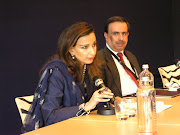For nearly 20 years, it was Jammu and Kashmir which was the principal theatre of violence and asymmetric warfare that was injected from Pakistan. Acts of terrorism in the state, after a decade or so, no longer made headlines or attracted public attention. In a perverse way, violence was seen as part of the diabolical game between India and Pakistan over the region. November 26, 2008 was the game changer. Outside Jammu and Kashmir, it was the first attack of a fidayeen suicide squad on Indian territory. It was also the first attack on foreigners, including the first on Israeli citizens. It was the second attack in which all the perpetuators were Pakistani nationals (the first being the attack on the Indian Parliament) and the second one on India's economic infrastructure. It was an attack in which the victims were both the super elite and the ordinary men and women on the street. Not surprisingly, 26/11 will not be easily erased from the nation's memory.
Long before 26/11 and even 9/11, for nearly 15 years now, one man has been fighting a lonely war against terrorism from his small bachelor apartment in Chennai. Since 1994, B. Raman has been tracking terrorism and terrorists, and warning of "what is to come" and the need for pre-emptive action. Not surprisingly, Raman has himself become an institution. A former spook who headed the counter-terrorism division in India's external intelligence agency, R&AW, Raman's reputation as the foremost Indian analyst on terrorism is, in reality, a function of his retired life. Almost every day, he churns out words of wisdom, in article after article (on the Net and elsewhere) which become the gospel truth for terrorism watchers across the world. The details that he provides seem to suggest that he gets a daily briefing from R&AW, Mossad and the CIA. I once asked a senior R&AW officer if the agency briefed Raman. His answer was revealing: "We don't brief Raman. He briefs us." The truth is that Raman has demonstrated that there is a mine of information available in the public domain that few have the patience to access.
Mumbai 26/11: A Day of Infamy is a book written in Raman's staccato style: short pungent sentences delivering heavy punches. On December 8, 1941, the American President, Franklin D. Roosevelt described the Japanese attack on Pearl Harbor as a day of infamy. The surprise and "treacherous" attacks were planned and executed even while the Japanese were holding peace talks with the United States. For Raman, 26/11 was, more than 60 years later, another day of infamy: December 1941 changed the history of the world. But for Raman, India's day of infamy has changed very little. Neither has it changed the history of the subcontinent, nor has it "created the fear of god in the minds of Pakistan and its terrorist surrogates", and nor has India's reactions made it certain that there will not be another 26/11.
Raman, of course, offers a 22-point charter of corrective action. These include the need to revive and strengthen the covert action capability of R&AW, the importance of creating a common database on terrorism for all the agencies, and to make the Multi-Agency Centre of the Intelligence Bureau effective. He also highlights the importance of strengthening the National Security Advisory Board and to stop using the National Security Council Secretariat as a dumping ground for retired officers. And, finally, Raman would want to strictly enforce the privileged direct access to the prime minister of the intelligence chiefs.
Published in India Today
Saturday, November 28, 2009
Subscribe to:
Post Comments (Atom)







No comments:
Post a Comment